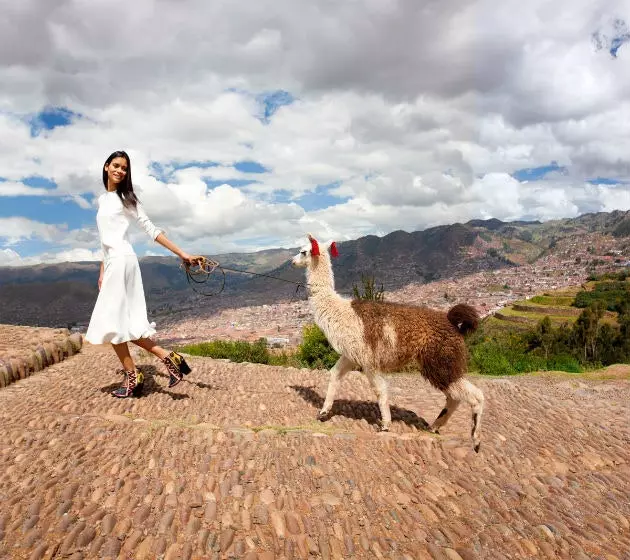
All roads led to Cuzco, the navel of the world
Cuzco is not a cougar That is what the director of the Regional Historical Museum of Cusco says, who at the beginning of the year assured –against some chroniclers and researchers– that the architectural silhouette with which the city was designed would be that of a koa , a wild cat considered in Andean mythology god of rain and hail . This historic Pandora's box opened by Anna Maria Galvez , far from being catastrophic, only ratifies the unknown that at this point continues to be the inca imaginary . This is because it was an agraph culture, based on the oral tradition and only supported by songs, paintings and quipus (string, knot and color based mnemonic accounting tool) .
It also had a lot to do with that "custom Cusco of intentionally omitting any episode that upset the new lord ”, explains contemporary historian María Rostworowski de Diez Canseco in her book History of the Tahuantinsuyu (as the so-called Inca Empire by the Spanish is known in Peru). A political amnesia that consisted in misrepresenting historical events and that has caused that there is no firm consensus when it comes to enumerating chronologically the number of Incas ('emperors') who came to rule, from that original Cuzqueña Confederation of the 12th century until the arrival of Francisco de Pizarro in the 16th century, during the post-apogee of Tahuantinsuyu.
For that reason, neither Sacsayhuaman , the mammoth Inca construction that crown the city and from which I try to discover the outline of the animal, it would be a fortress . New archaeological data point to the fact that it was really an important ceremony center . reason why each June 24 , on the winter solstice (in the southern hemisphere), the inti raymi festival , a staging of the cult ritual to Inti or the sun god . The harmony between the architecture of its colossal stone blocks and the landscape is amazing. Be that as it may, from up here, the historic capital of Peru appears as the place with the most dramatic skies you can imagine . I swear I'm not exaggerating.
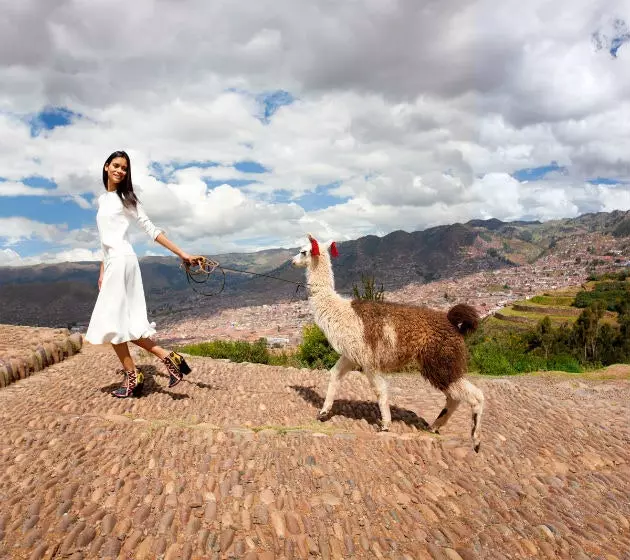
All roads led to Cuzco, the navel of the world
On the eastern slope of the Andes, with little more than 400,000 inhabitants , Cuzco is a city of low buildings and prominent churches . Including its cathedral, which stands imposingly in the Plaza de Armas and rivals in beauty the Church of the Society of Jesus , located opposite. The rest of the buildings with arcades in the square, old colonial mansions whose bases belonged to inca palaces (resistant to earthquakes), today they are bars and restaurants. Until the fast food is present in one of the preferred destinations for young North Americans and Europeans in search of a ultimate Indiana Jones adventure before entering adult life.
I, who already made that vital leap years ago, prefer to go in search of the History and throw myself into the streets like an Inca mummy : a drawing by the indigenous chronicler of the Viceroyalty Felipe Guaman Poma de Ayala shows how the they walked in procession . Such was the veneration for these embalmed bodies that the rulers they became oracles who were cared for and brought food even after death . Their panaca (offspring) was responsible for their not falling into oblivion, except for the heir, so social tensions were continuous.
just the mummy hunters ’ Spaniards managed – after decades of persecution – to eradicate these funerary rituals. Now the mummy hunters are different: the scientists who use their technologies to investigate the four regions of Tahuantinsuyu , which departed from Cuzco: Chinchaysuyo (west to Ecuador and Colombia) , antisuyo (to the north and northeast, including the basins of the Urubamba and Madre de Dios rivers), Collasuyo (to the south, from the Andes and the highlands of Bolivia to Chile and Argentina) and continue (southwest to the Pacific) .
Special attention deserves the mummies of the Inca sacrifices of children, a thorny issue that they seem not to want to deal with. So since they are heirs to their culture, I will respect their decision and just mention the llama and alpaca sacrifices.
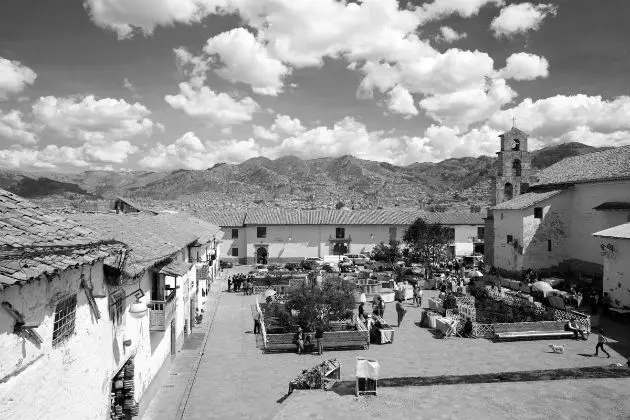
Peru is presented as the place with the most dramatic skies you can imagine
Being in the so-called navel of the world causes a sensation similar to when you finally visit Rome and feel part of something that once was "very big" . The comparison with the Roman Empire is inevitable, since we are talking about a macro-state whose domains came to occupy some two million km² , communicated by a complete road system of almost 50,000 kilometers with which they managed to bend from a desert to the longest mountain range on Earth . And all these roads led to Cuzco. Very instructive in this respect is a map of the Inca Museum in which they superimpose the outline of Tahuantinsuyu on Europe: the huge red spot It covers –horizontally– from Galicia to Russia.
A blue sky lapis lazuli with cotton candy clouds fight with him Qorikancha for getting my attention. A battle between the divine and the human today lost by what was the most important temple of the Sun in Tahuantinsuyu. When I am finally able to look down, I try to imagine what this Inca cult center might have been like without the Catholic patina imposed by the Spanish. “With the four walls covered from top to bottom with plates and planks of gold and [...] a round figure of the sun with rays and flames of fire so great that it reached from wall to wall”, I have read in the real feedback of the Inca Renaissance Garcilaso de la Vega . In return, the writer also reveals to us how the conqueror Mancio Serra de Leguizamo lost that giant gold figure of Inti in a card game. Apparently there was a time when men prevailed over the gods on this earth.
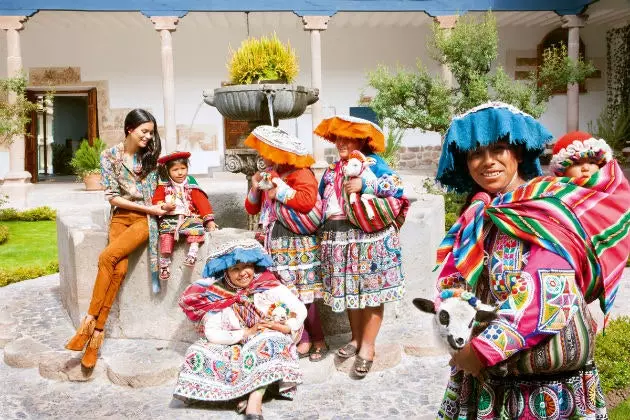
The color of Cusco
The Qoricancha (‘gold enclosure’) was the great bet of the great Pachacutec Inca Yupanqui (almost 50 years of reign from about the year 1400), the ' ninth Inca ruler, promoter and restorer of Tahuantinsuyu , who entertained him with riches in gold and silver and established the sun worship in the official state religion. A statue of him in the Main Square daily recalls the historical importance of the “ greatest man that the aboriginal race of America has ever produced ”, as the explorer and writer Sir Clements Markham defined it.
I go through the rooms one by one of what would become the Convent of Santo Domingo in 1534, where the Imperial and Viceregal architectural styles coexist in harmony : stone ashlars perfectly aligned without mortar occupy places once traveled by Dominicans. Here, more than anywhere else, you can corroborate that phrase that dictates how "the precision of the carving and meshing of the blocks makes it impossible to insert a razor blade between them". These enclosures (dedicated to the sun, the moon, the stars, the rainbow, lightning and lightning) emerged from the remains of the 1940 earthquake.
Since then, archaeologists have lamented that the church was not moved in order to investigate the main temple of the 'Inca Empire' as it deserves. It's not hard to feel overstimulated, almost like a shopper, in a city where there is a craft shop on every corner , there are even a giant market at the end of the sun avenue : the Cusco Artisan Center . First thing in the morning I visited the saturday market from the neighborhood of Saint Blaise , where I bought a Tumi-shaped pendant (a ceremonial knife whose semicircular blade was used both to make cranial trepanations for medicinal purposes and to cut the enemy's throat) .
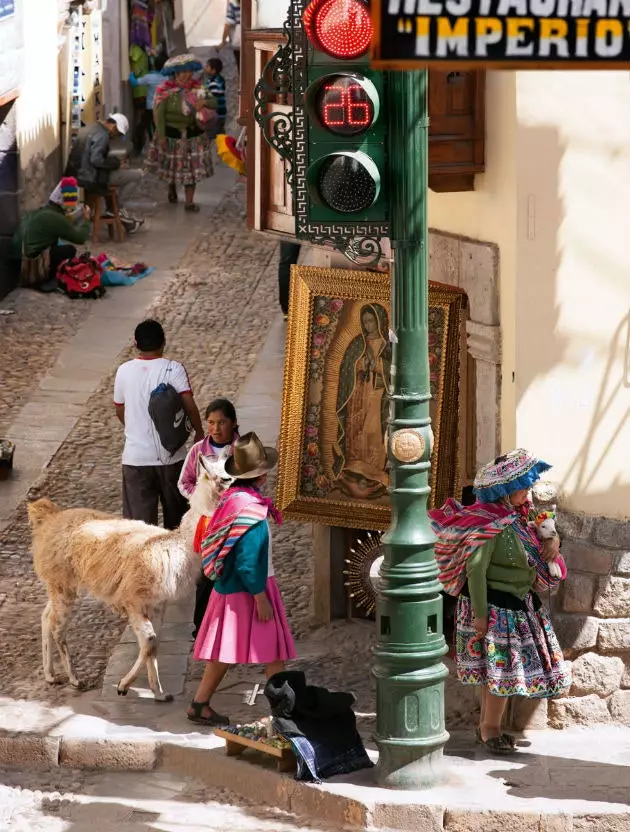
Crafts on the slope of San Blas
And on the way to the hotel, in The Altar House, a workshop of wooden crafts on the slope of San Blas , I have located the last piece carved by hand ten years ago by the father of Emma Quispe Zuniga , a young woman who today is dedicated to selling frames in series, although spruced up with gold and silver leaf by herself on the counter. The future of this workshop is similar to that suffered by the Cuzco School of painting that today reproduces the canvases that Emma sells within her frames.
In the 16th century, artists started from Mannerism , interpreted from locally the Baroque , reached a unique syncretism... and at the beginning of the XVIII Cuzco had already become an exporting workshop city : large quantities of more vulgar canvases they came out of industrial workshops, perhaps not with the original quality, but attractive enough to be coveted in present-day Argentina, Chile, Bolivia and Mexico . One of the works that best summarizes Cuzco syncretism is The Last Supper (1748), exposed in the cathedral.
In it, the indigenous artist Mark Zapata changed the traditional Easter lamb for a baked guinea pig (Guinea pig). I, as in the picture, also ate guinea pig at my last dinner in Peru, but using the learned Inca amnesia I prefer to omit my opinion in this article.
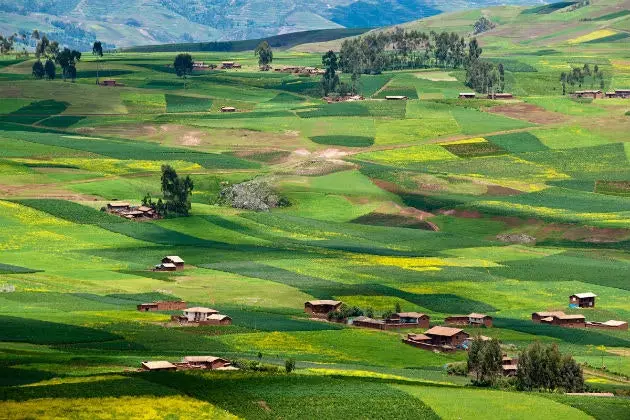
The Incas' Sacred Valley
My hotel is the Belmond Palacio Nazarenas, one of the most exclusive in the city (and the country) and a redoubt of tranquility (for something, in addition to an ancient Inca palace, it was also a convent). My suite opens with a huge window to the Cuzco's first outdoor pool and the Inca stones of one of the walls transport to past times . The canopy of my bed, the embroidered sheets and that marble bathroom bigger than my first apartment in Madrid they make me feel like an authentic curaca or inca aristocrat.
The night has been quiet, I appreciate having air conditioning enriched with oxygen to fight against soroche (altitude sickness caused by being at 3,400 meters above sea level). My head doesn't hurt today. So I am able to put all my senses at the service of the menu devised by the Peruvian chef Virgilio Martinez , owner of the Central restaurant (Lima), which heads the list of 50 Best in Latin America . This gastronomic experience will no longer be repeated in the restaurant senzo of the hotel, since since the Central obtained this recognition (and its other London location, a Michelin star), Virgil is focused on serving the 400 reservation requests daily.
With a coca leaf under my tongue I prepare to leave for the sacred Valley Of the Incas. Although it is only 2,792 meters above sea level, during the journey it reaches almost 4,000 meters. Nature puts everything you need to survive within your reach, so I have no qualms about drinking coca tea or chewing its leaves to alleviate dizziness and a feeling of exhaustion. In the year 2005 the Regional Government of Cusco declared the coca leaf plant “ Regional Natural - Biological - Cultural - Historical Heritage of Cusco and Botanical Resource integrated into the culture and cosmovision of the Andean world and cultural and medicinal customs and traditions ”. It also recognized as legal its cultivation in the valleys of The Convention, Yanatile and Qosñipata , which led Peru to become the world's largest producer of this plant in 2012 (above Bolivia and Colombia) .
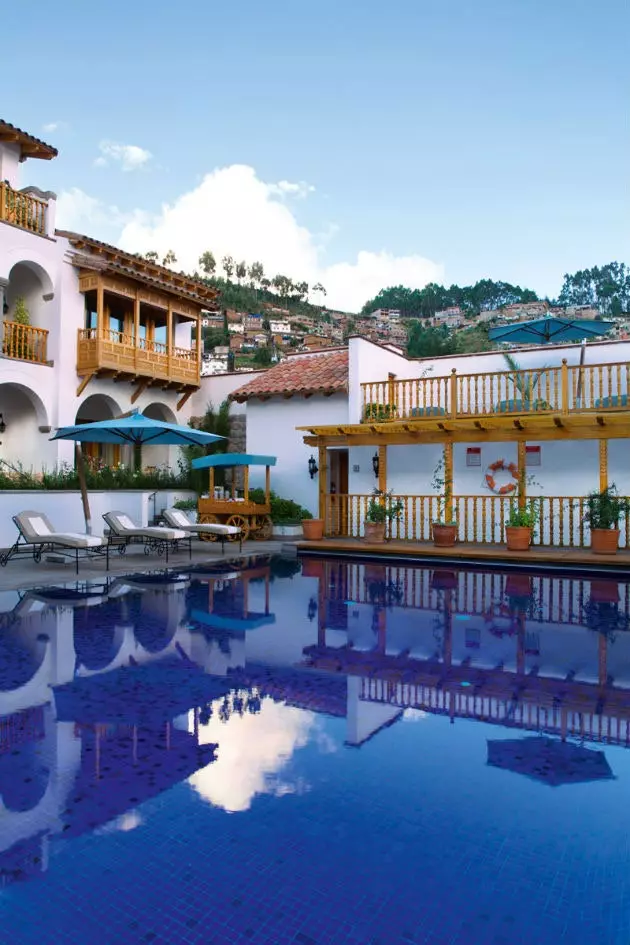
Belmond Palacio Nazarenas, one of the most exclusive in the city
Figures that have made the central government worry, which fights against illegal plantations, but also offers an alternative development program for peasants, inviting them, for example, to plant coffee plantations . We hope that these measures are not so drastic as to destroy the most important plant in the Andean world for its nutritional, energetic, digestive and respiratory functions. But not only in the Inca culture – considered sacred and cultivated on a small scale and exclusively for the nobility – but also for some pre-Inca groups that already represented with their huacos (ceramic pieces) to chewers of Coca leaf.
Yes Lime is the gastronomic capital of Peru, it could be said that the region of Cuzco, and its Sacred Valley of the Incas, it's your pantry . Here, in the area between the towns of Pisac and Ollantaytambo , they grow best types of corn in the country (more than 50 varieties have been identified), including the famous giant white corn from the Urubamba . It was its climatic qualities that made the food produced in this Andean valley serve to feed a large part of the millions of inhabitants of Tahuantinsuyu , a state based on the economy agricultural . But achieving it was not easy, it was necessary to devise a system with which to cultivate on dizzyingly vertical slopes: they are the platforms, or the terraces as they say here. Agricultural engineering terraces two or three meters wide that were prepared for planting.
The usual thing is to visit the town of Chinchero and their mamachas weavers ('mothers' with folk costumes from the area); Pisac and its archaeological site and Ollantaytambo and its monolithic Sun Temple . But outside the circuit, it's worth it Moray and its platforms in the form of concentric rings . According to the archaeologists, it would have been an agricultural laboratory used as a model for calculating the production of the entire Tahuantinsuyu, since it reproduced 20 different types of microclimates . Thus, more or less until the third terrace of the so-called amphitheater, it is thought that fruit trees, the coca plant and the largest corn grew; while on the following platforms, with lower temperatures, they did cereals such as quinoa.
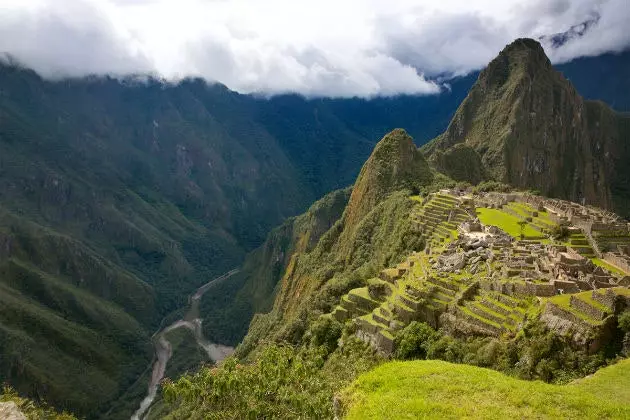
It is possible to appreciate how the Urubamba canyon borders Machu Picchu next to the urban sector
The last platforms were reserved for potatoes , the best adapted to the Andean cold. So much so that in a joint effort between Canadian and Peruvian researchers they have come to classify 509 types of native potatoes . Today I leave on the luxurious train Hiram Bingham towards Machu Picchu from the station Ollantaytambo . I stay at the nearby Belmond Hotel Río Sagrado, with a solar heated outdoor pool and some perfect villas , built with natural materials in the style of a small Andean town.
Nestled between the mountains and the Urubamba River, the name of his restaurant, The orchard , is a complete declaration of intentions: the elaboration of the fresh vegetables grown in its own garden, as well as other local products, is honest and respects authentic flavors. Trout ceviche, Andean grain tabbouleh (quinoa and wheat) with green asparagus and Urubamba noodles with mushroom ragout preceded a fabulous muña chocolatísimo (a plant from the Peruvian highlands).
The train journey follows the course of the river until reaching the Urubamba canyon , which is part of the amazon basin . Seasoned with the numbing rattle of the rails, lunch of traditional recipes with modern twists is matched by views of ravines, distant Inca ruins and endemic flora and fauna, from orchids to hummingbirds.
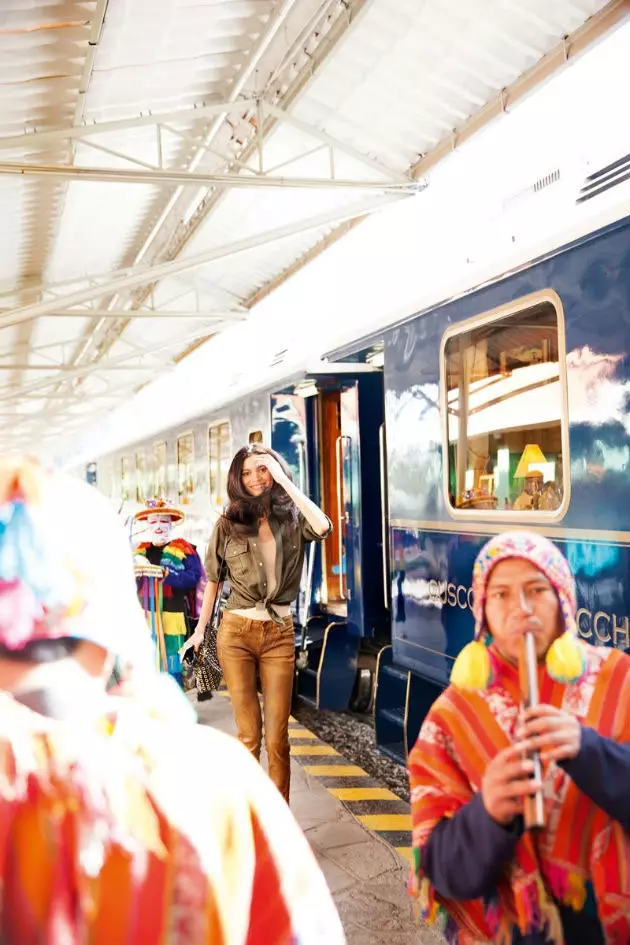
Poroy station destination Machu Picchu
The last stop is hot waters , a picturesque and labyrinthine town full of handicrafts from which the buses that go up to Macchu Picchu . The path is winding, so I amuse myself chatting with César, one of the official guides. The moment is approaching to see that image so often dreamed of and anxiety makes me get the worst of the most journalistic vein: "After 20 years of profession, what do you think of the current tourist overcrowding and which do you think has been the best moment of Machu Picchu?”, I blurt out without fuss. César explains to me how unesco has suggested emergency measures to preserve the archaeological park of Machu Picchu, and fondly remembers the decade of the 80 , when opened the first routes on foot and adventure of the Inca Trail . Apparently, everything was simpler and more natural then, exploration was more important, both in the cloud forest and introspective.
Once there, nothing matters . As you ascend through the agricultural area, emotion overwhelms you (it may also be the result of soroche), and when you finally reach the House of the Guardian the perspective of the urban area with the mount Huayna Picchu background is sensorially unrepeatable. Although deep down, but very very deep down, you know what is happening to you like with New York: you have seen countless images and read or researched so much that it is as if you already knew it.
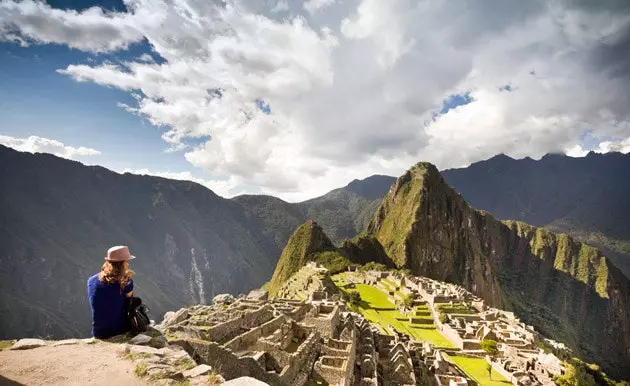
Citadel of Machu Picchu
Although nothing is further from reality: Machu Picchu is still a great mystery . In every moment new archaeological discoveries add information or subtract conclusions about the true function or the inhabitants of the so-called Inca citadel . On July 24, 1911, the professor of Yale and explorer Hiram Bingham discovered ' the lost City ' of Vilcabamba . It was never really lost, since the peasant Agustín Lizárraga had been going up there for nine years to collect.
It also turns out that it was not Vilcabamba, the city where, according to the chroniclers, the conquerors overthrew the last Inca 'emperor' (no remains of Spaniards have been found in Machu Picchu). The ratio of four to one of skeletal remains of women – who in the 20th century were believed to be Virgins of the Sun – was dismantled by current forensic anthropologists, who defend a figure almost equally divided between men and women. So it's not just a sanctuary either.
The more than 200 visible structures arouse our curiosity, when what is truly amazing is the engineering used to shore up the mountain . The cunning Incas devised sophisticated terraces that drained torrential rainwater with filtration systems. And all this, without tools or the discovery of the wheel.
Two seismic faults cross it, and my biggest concern is to ask the guide if the Ministry of Culture is finally going to allow the opening of the 'secret' door discovered in 2011 by David Crespy , a French engineer based in Barcelona who was on tourism. The team led by the historian and geographer Thierry Jamin has already demonstrated a posteriori, with electromagnetic resonances and georadar, the existence in the basement of a staircase, steps and even a quadrangular room . “What if it was a burial chamber? What if the mummy of Pachacútec was there?” I ask nervously and inquisitively. I only get a disdainful explanation about the infeasibility of these possibilities, giving as true the data of the Spanish chroniclers. Then I smile as I imagine the guide as a member of a secret panaca that has survived to this day to protect the memory of the Inca. Here is the basis of the enigma of Machu Picchu and the Inca imaginary: Why discover what perhaps does not want to be discovered? ?.
* This article is published in the December 79th issue of Condé Nast Traveler magazine. This issue is available digitally for iPad on the iTunes AppStore, and digitally for PC, Mac, Smartphone and iPad at Zinio's virtual kiosk (on Smartphone devices: Android, PC/Mac, Win8, WebOS, Rim, iPad) . Also, you can find us on Google Play Newsstand.
*** You may also be interested in...**
- Peru to the rhythm of the waves
- Emerging powers at the table (II) : Peru
- Emerging powers at the table (I): Peru
- All the articles of Marta Sahelices
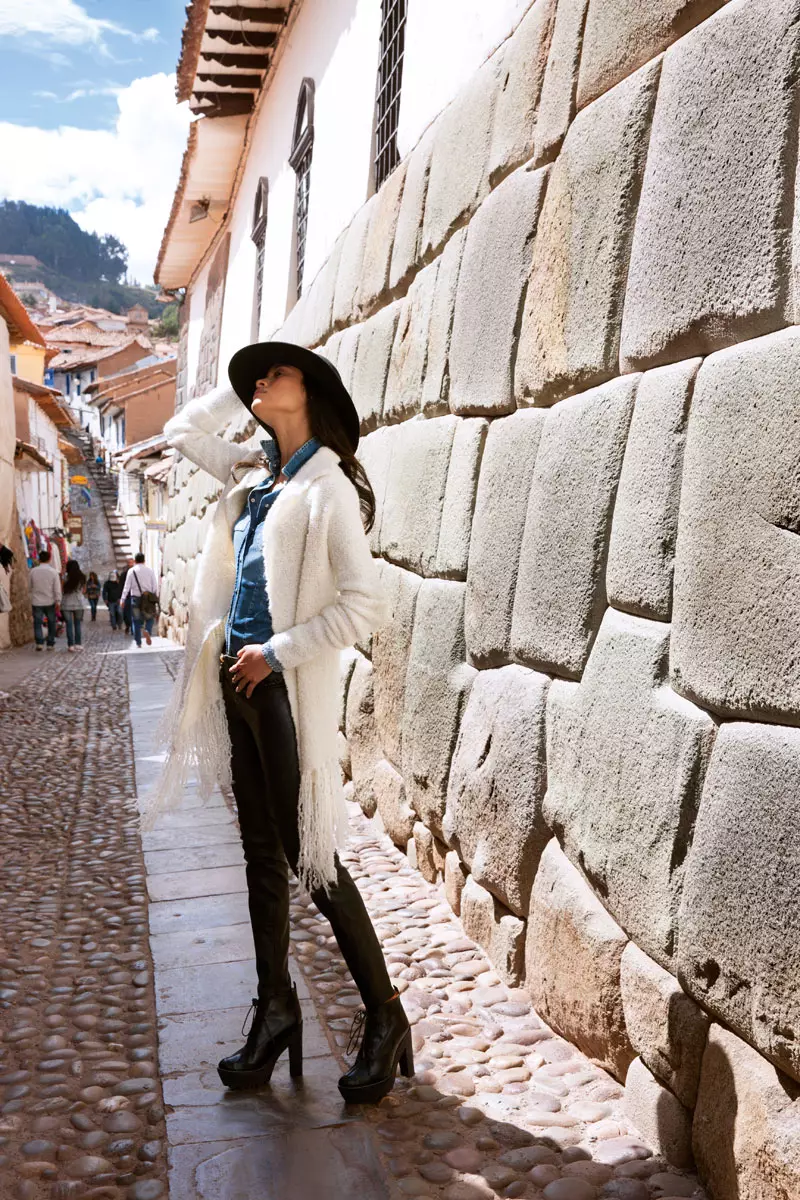
Cuzco: own style
